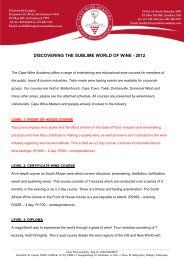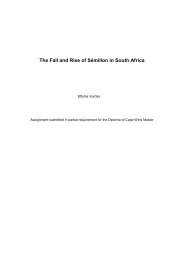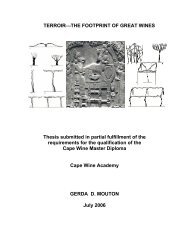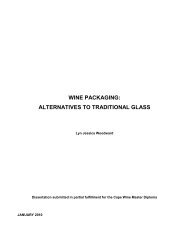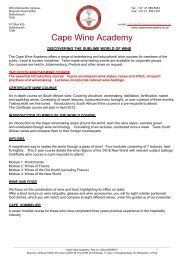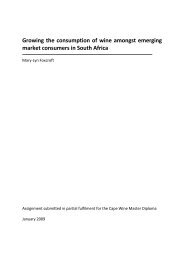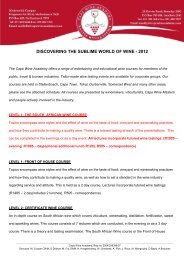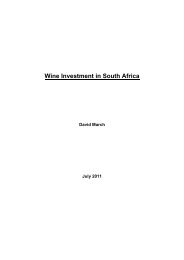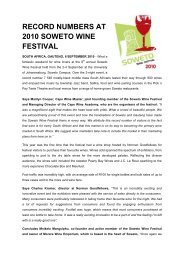micro-oxygenation in contemporary winemaking - Cape Wine ...
micro-oxygenation in contemporary winemaking - Cape Wine ...
micro-oxygenation in contemporary winemaking - Cape Wine ...
Create successful ePaper yourself
Turn your PDF publications into a flip-book with our unique Google optimized e-Paper software.
Micro-<strong>oxygenation</strong> <strong>in</strong> Contemporary W<strong>in</strong>emak<strong>in</strong>gmonomers. Oligomers have from 3-10 monomeric units whereas condensed tann<strong>in</strong>s havemore than 10 units (Cheynier et al., 2006). Tann<strong>in</strong>s from grape seeds and sk<strong>in</strong>s have anaverage cha<strong>in</strong> length of 10 units whereas sk<strong>in</strong> tann<strong>in</strong>s are usually about 30 units long(Monagas et al., 2005).OHOHOHnOHHOOHOOOHOHOHOHOHOHOHOHHOOHOOOHOHOH4,8-l<strong>in</strong>ked Catech<strong>in</strong> DimerType-B Procyanid<strong>in</strong>OHCatech<strong>in</strong> PolymerFigure 10: Grape Tann<strong>in</strong>sc) FlavonolsThe flavonols (Table 12) are yellow pigments which are produced <strong>in</strong> grapes <strong>in</strong> response toUV radiation (Monagas et al., 2005). Quercet<strong>in</strong>, myricet<strong>in</strong> and kaempferol are the mostcommon flavonols <strong>in</strong> grapes and w<strong>in</strong>e, occurr<strong>in</strong>g mostly as 3-O-glycosides rather than freeaglycones.These compounds are important as co-pigments for anthocyan<strong>in</strong>s and contribute to w<strong>in</strong>e’santi-oxidant capacity.43



